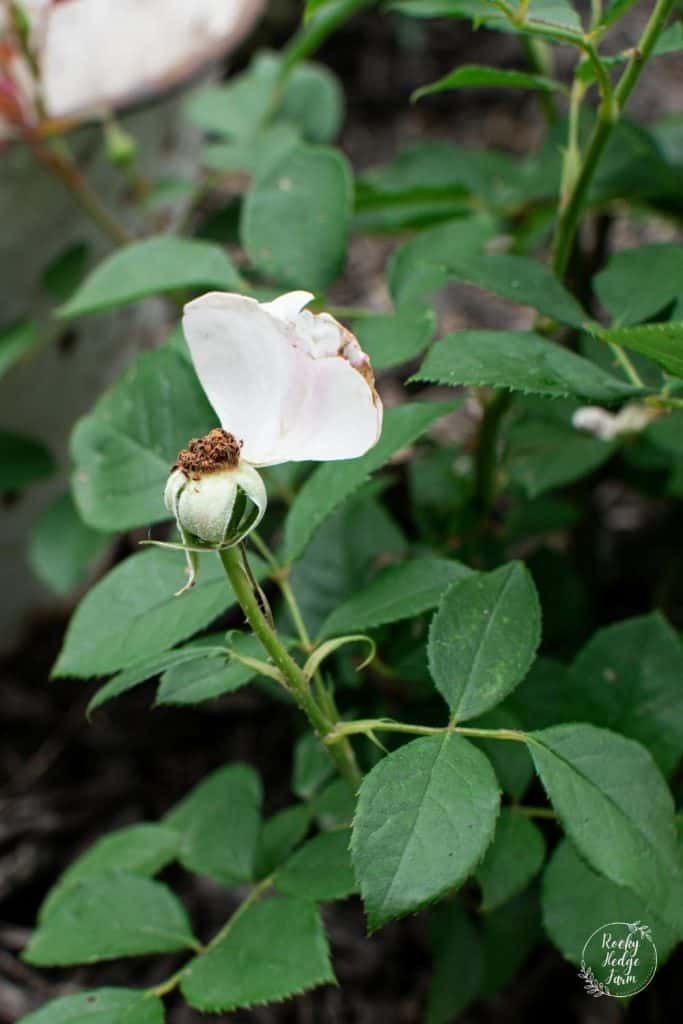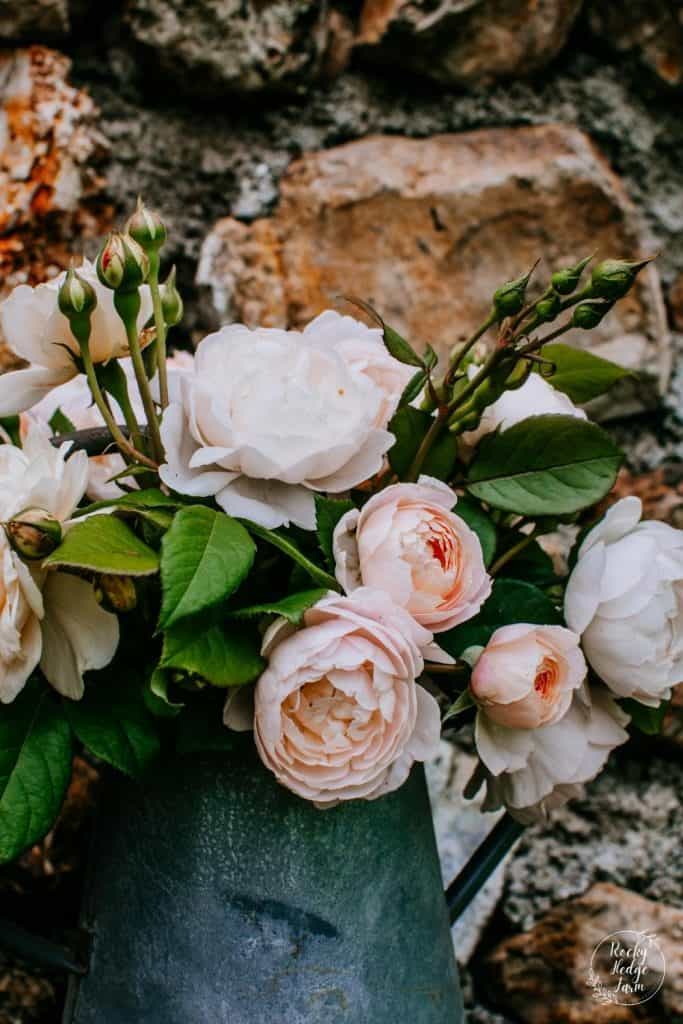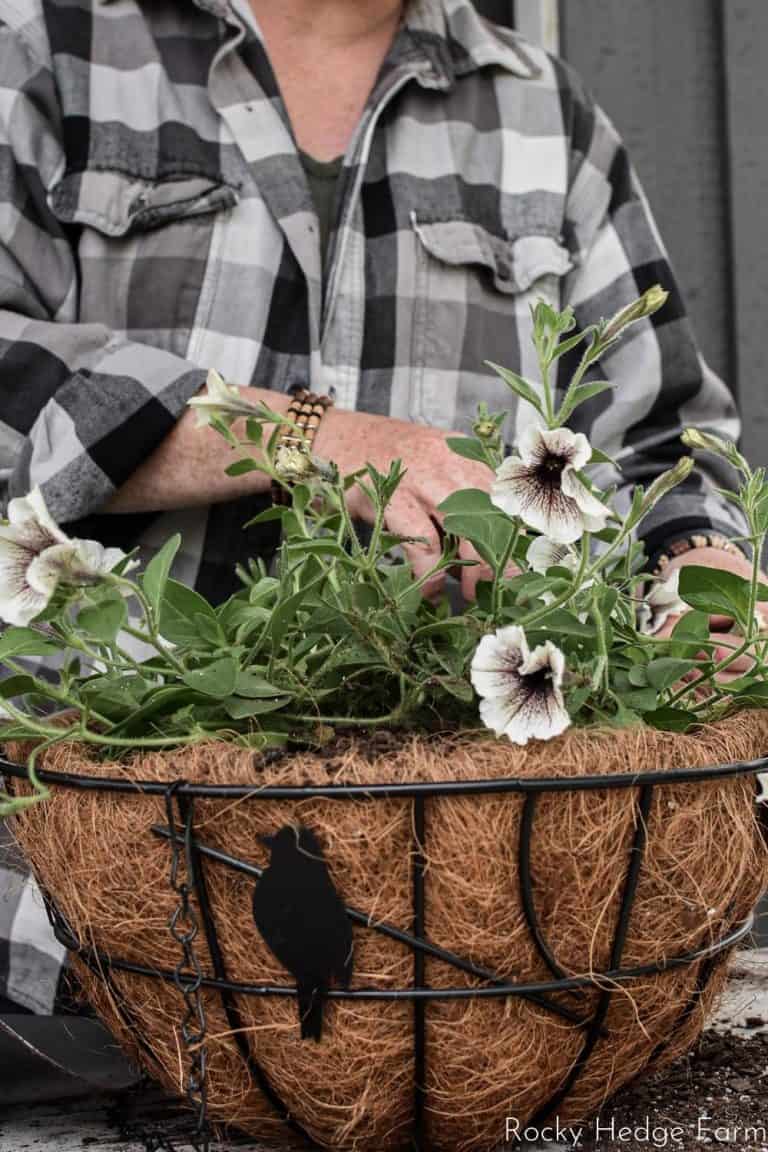How to Deadhead Roses for more Summer Garden Blooms
Deadheading can be daunting, but you can learn how to deadhead roses for more summer garden blooms with this simple guide.
Deadheading is essential for many roses; this pruning technique will help them stay in bloom, look tidy and prevent disease. Deadheading increases the number of flowers your rose produces each season.

How to Deadhead Roses for more Blooms
There are two different methods to deadhead a rose. One way is to cut the flower stem back to an outward-facing bud above a five-leaf junction. The twist and snap method is the other way, which entails simply holding the old flower and snapping it off.
How to Keep Roses Blooming
To keep roses blooming, deadheading is a necessary task for those who want to keep their bushes producing blooms. It’s just as important as fertilizing, watering, and trimming.
If you have never deadheaded your roses before and have no clue what it means or how to do it, here are some basic instructions.

What is Deadheading a Rose?
Deadheading is a horticulture term that describes removing old or unhealthy flowers from a plant. This is the best way to promote new healthy growth and reduce disease.
Deadheading is a gardening technique that focuses the roses’ attention on blooming and prevents them from producing seed heads.
By removing the spent blooms on a regular basis, you redirect the plant’s energy back into flower production instead of seed production.
If you want to prolong the flowering season, it’s essential to deadhead faded roses.

When to Deadhead Roses
Roses should be deadheaded continuously throughout their blooming season from early spring to late summer when the flowers start to fade, and petals begin falling to the ground.
To maintain consistent flowering, you should deadhead at the first sign of fading roses, generally in early spring.
Why Should You Deadhead Roses
Deadheading roses is necessary to prevent the plant from expending energy on producing seed pods, encourage more blooms, prevent disease, and keep your garden beautiful.

Encourage Blooms
Regular deadheading is all about keeping the roses blooming. As blooms begin to fade, the plant focuses energy on producing seeds instead.
Deadheading roses encourages the rose plant to put its energy into producing new blooms instead of baring rose hips. Removing the finished blooms will encourage more blooms throughout the season.

Improve Appearance
When blooms are left to wilt, the plant will begin to look unattractive. Deadheading the spent flowers will keep the rose bush looking neat and pretty.
Deadheading can be done just because it’s satisfying to remove the faded blooms from the garden before the petals fall on the ground and make it look tidy.
If you have an aesthetic motivation for gardening, you might want to deadhead for that reason.
Prevent Disease
Cutting the spent flower is an easy way to improve a plant’s health. Deadheading these roses will allow good air circulation, reducing the chances of fungal infections and removing any hiding places for pests.
Gardening Essentials You May Need
- Gloves: To avoid being pricked by rosebush thorns, a good thick pair of gardening gloves are crucial.
- Garden Scissors: You will need something sharp to cut the stems. A good pair of garden scissors will do the job, but you can also invest in secateurs.
- Bucket: A medium to a large galvanized bucket is convenient for gathering your faded rose blooms.
How to Deadhead Roses
Deadheading roses is a simple way to keep your plants tidy and healthy. Deadheading roses involves removing faded rose blooms to shift the rose bushes’ energy from producing rose hips to making more flowers.
Gather Your Gardening Tools
Collect your gardening tools. Gardening scissors, gardening shears or secateurs, gardening gloves, and a bucket to dispose of the rose cuttings.
Identify the Faded Blooms
Search the rose bush for the faded blooms. Blooms that have dried, withered, or are missing petals will be the ones that need to be deadheaded.
Deadhead Spent Blooms
There are two methods for deadheading a rose bush: removing a single flower spent bloom or removing the whole flowering head itself.

Removing One or More Faded Rose Blooms
When deadheading your roses, it’s essential to keep an eye out for any individual blooms that may be fading or wilting even though other healthy flower buds or blooms surround them.
There is no need to remove the entire flower head. Snip just where the rose joins the stem to remove an individual faded bloom. Place the faded flower into your bucket and leave the remaining buds and blooms to flower.

Removing a Whole Faded Flowering Rose Cluster
Throughout the growing season, you’ll find that often whole flower clusters will show signs of wilting or fading. When this happens, it is time to remove the cluster.
To do this, follow the stem of the faded rose cluster to just where it makes a junction with the first leaf, which has five leaflets.
Leave about one-quarter of an inch of stem above this junction and snip the stem at a 45-degree angle slanted cut just above an outward facing bud eye. The cut should always slant away from the bud.
Toss the old blooms and flower stems into the bucket.
Prune the Rose Bush
After deadheading the faded rose blooms, take the opportunity to cut back any disproportionately large stems.
Cutting them back to the rest of the plant size can help maintain a neat rounded shape of your rose bush.
When to Stop Deadheading Roses
Early fall, generally around September or October, is the best time to stop deadheading your roses and instead allow them to form rose hips to better prepare for winter.
As the days get shorter and the weather turns cool, the rose will need to retain energy in its roots for the next season before going dormant for the winter.
Learn More
If you love roses and would love to learn more, check out the post on how I planted bare root shrub roses. You can also read all my gardening posts and learn how to grow a cut flower garden by visiting the flower gardening section here at Rocky Hedge Farm!

Deadheading roses can be an easy task that you do with just a little time each day. Do it often, and you can be sure your roses will continue to flower all season long for a gorgeous cut flowers floral bouquet!





